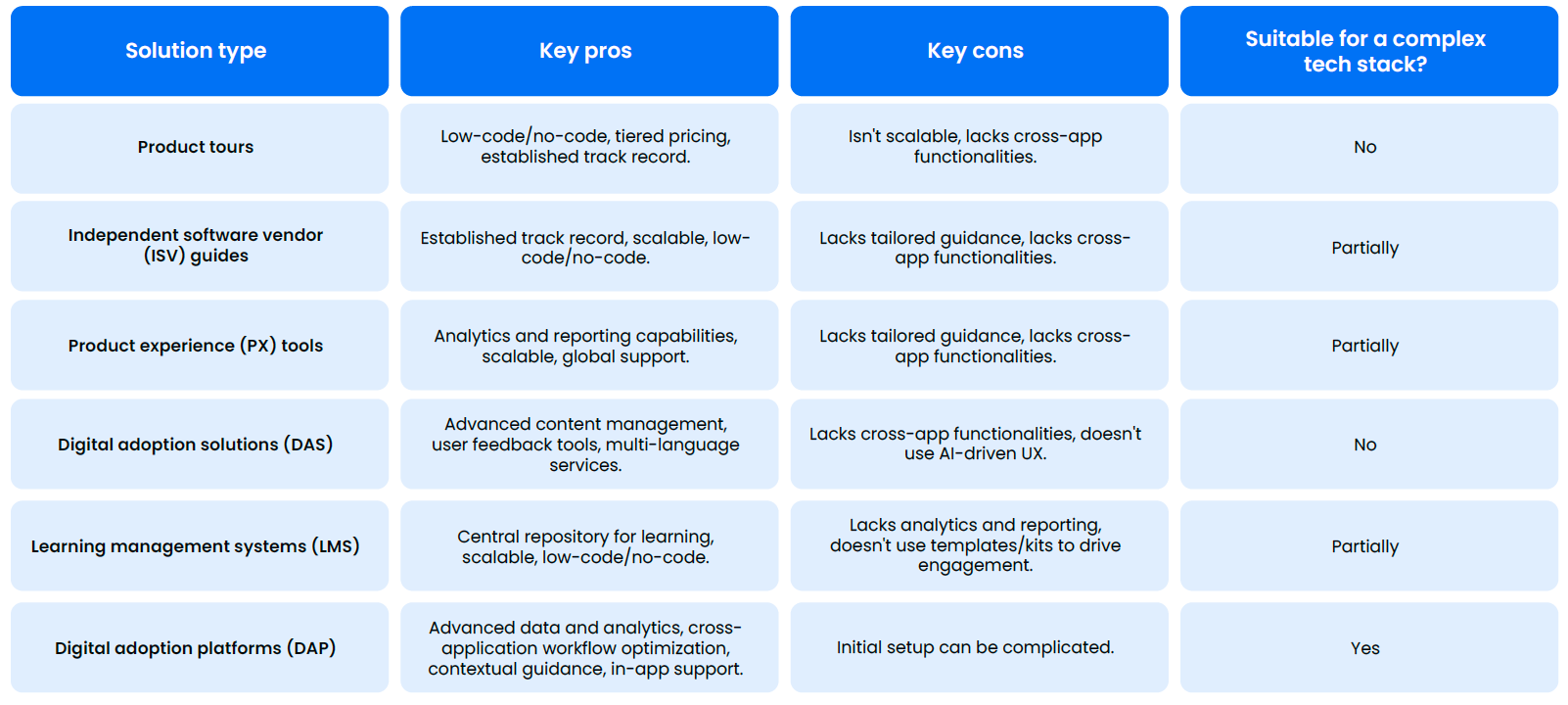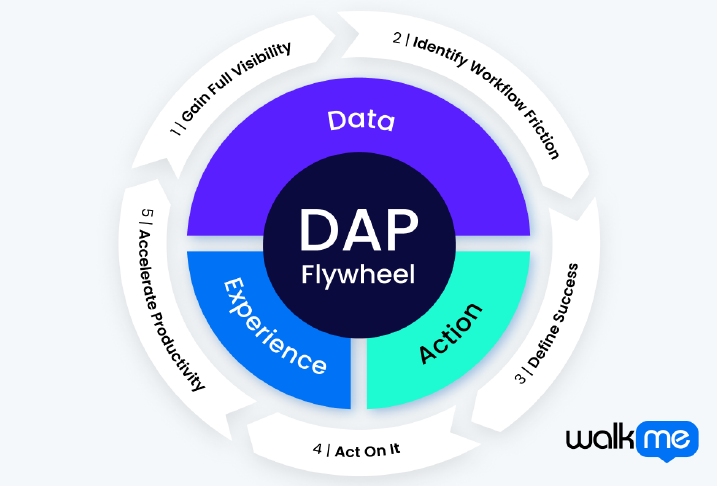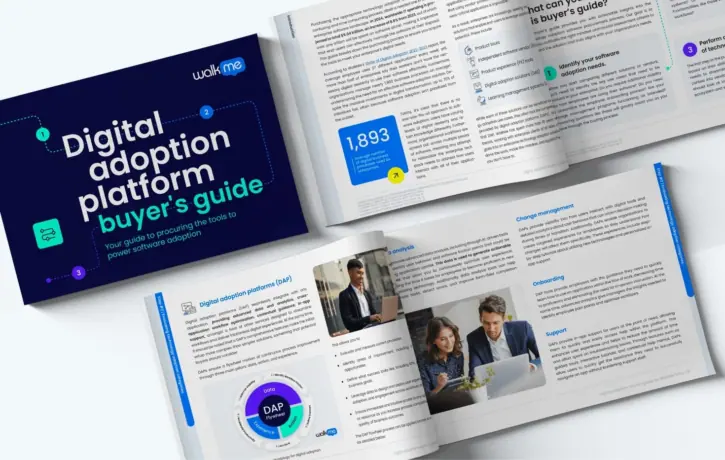With global IT spend set to increase to $5.1 trillion in 2024, the importance of software adoption has never been more important. This has made selecting a technology adoption solution a critical decision for purchasing managers and anyone involved in the software procurement process.
In WalkMe’s Digital Adoption Platform Buyer’s Guide, we provide a step-by-step guide for locating and onboarding a technology adoption solution. Our goal is to help you cultivate the right mindset and assessment criteria to make an informed purchasing decision that aligns with your organizational needs.
Breaking down WalkMe’s digital adoption platform buyer’s guide
To provide you with the clearest roadmap in your technology adoption solution purchasing process, we broke down our buyer’s guide into the following three steps:
Identifying specific software adoption needs
By identifying the software adoption use cases that your enterprise needs to resolve, including visibility into software use, employee onboarding, in-app support, and change management, you’ll be able to better zero in on the solution that best meets your needs.
Evaluating technology adoption solution categories
There are a variety of technology adoption solution categories in the market, including digital adoption solutions (DAS); independent software vendor (ISV) guides; product tours; product experience (PX) tools; learning management systems (LMS); and digital adoption platforms (DAP). Here, we look into each category to give you a feel for how they would match your organizational needs.
Comparing vendors in each categories
The third step when researching technology adoption solutions is to take a deeper look into individual vendors and assess their strengths and weaknesses. Here, we look at the leading service providers in each category and evaluate them based on their company strengths, product strengths, AI capabilities, ecosystem and services, and pricing structure.
Analyzing the buyer’s guide results
 Each technology adoption solution category analyzed in our digital adoption platform buyer’s guide had specific pros and cons that should be considered when going through the purchasing process.
Each technology adoption solution category analyzed in our digital adoption platform buyer’s guide had specific pros and cons that should be considered when going through the purchasing process.
For example, while product tours benefit from being a low-code/no-code solution, they aren’t scalable, meaning they might not be suitable for a growing enterprise. PX tools, on the other hand, come with advanced analytics and reporting capabilities and are scalable. At the same time, they lack cross-app functionalities which limit their suitability for complex tech stacks.
Digital adoption platforms, however, support cross-application workflows, are fully scalable, and offer AI-driven UX and native AI capabilities. DAPs seamlessly integrate with any application, providing advanced data and analytics, cross-application workflow optimization, and in-app support, amongst many other benefits.

Indeed, WalkMe’s DAP allows you to pinpoint and resolve digital friction while maximizing software ROI. This, in turn, will help your enterprise realize:
- Increased software time to value.
- Cost savings based on better app utilization.
- Increased compliance with sensitive workflows, reducing risk.
- Productivity spikes as people spend more time on low-value tasks.
- Increased employee engagement as people spend more time on rewarding work.
To learn more about the different technology adoption solution categories and how WalkMe can help optimize your tech stack, download our digital adoption platform buyer’s guide.


